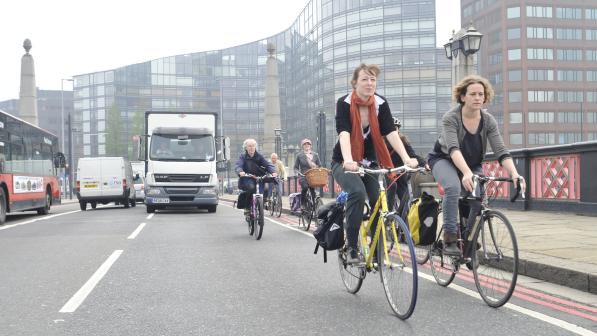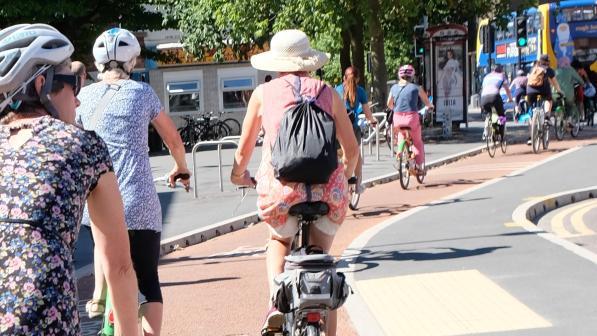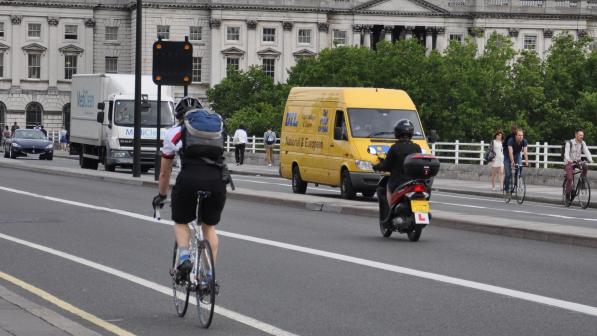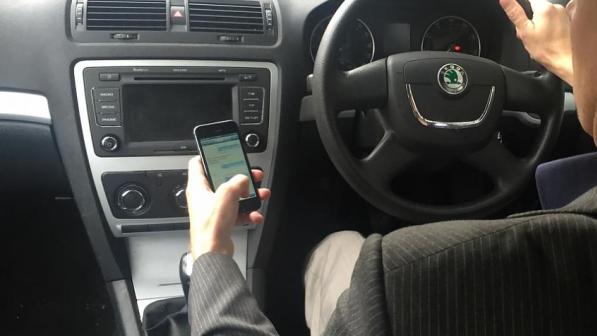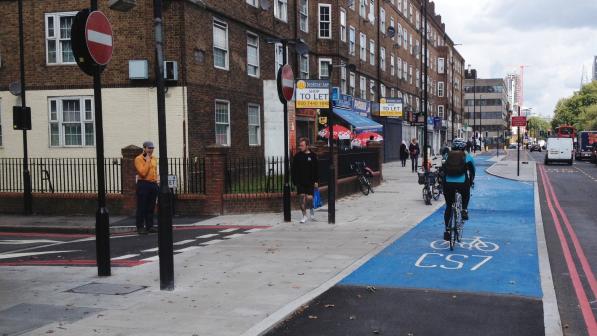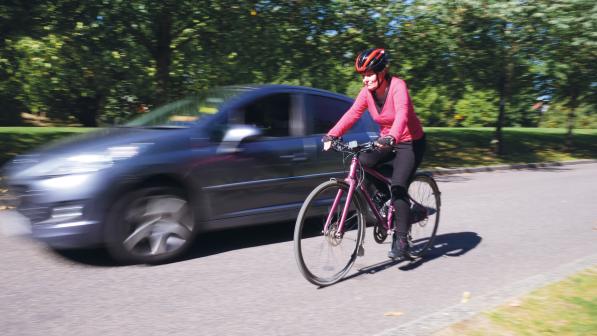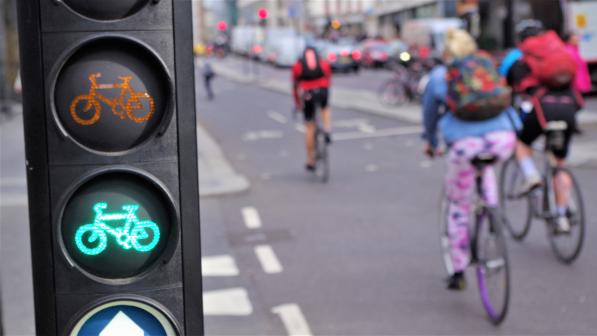What’s the best way to make sure injured cyclists are compensated fairly and quickly?

Pedestrians and cyclists injured in UK road collisions are at a significant legal disadvantage compared to those in most other European countries.
The majority of these countries apply some form of ‘presumed liability’ principle when deciding who is liable to pay compensation.
‘Presumed liability’ means that, in collisions between a motor vehicle and a pedestrian or cyclist, the driver is normally assumed to be liable for any resulting injuries or damages, unless they can establish that the fault lay entirely with the injured victim.[i]
The only European countries which do not apply this principle are the UK, Ireland, Romania, Portugal, Cyprus and Malta.
In these countries, the onus rests entirely on injured pedestrians and cyclists to demonstrate ‘negligence’ on the part of the driver before they can obtain compensation.
Why is the current system unjust?
- Pedestrians or cyclists involved in collisions with motor vehicles are disproportionately likely to end up being the injured victims.
- Conversely, it is highly unlikely that any motor vehicle occupant will be injured in collisions involving a pedestrian or cyclist but no other vehicle.
- Cyclists along with bus drivers are the road user types who are least likely to have responsibility (i.e. ‘contributory factors’) assigned to them by any investigating police officer called to the scene of a collision.
- Not only are cyclists/pedestrians more likely to be injured, but there is a significant chance that they won't remember the incident or, in very serious cases, lose their faculties altogether. This makes it impossible for them to supply the witness evidence necessary to demonstrate negligence on the part of the driver.
- The driver should, by law, have an insurer to defend them, whereas many injured cyclists/pedestrians in the UK do not. Hence, if the driver (or their insurance firm) denies liability, or claims that the injured party was partly at fault (i.e. ‘contributory negligence’), the injured party may well have to seek legal representation to defend their entitlement to compensation.
- Drivers in the UK (or, in practice, their insurance companies) routinely try to frustrate pedestrians and cyclists’ injury compensation claims. They do this either by: making spurious allegations of contributory negligence (e.g. that the injury would have been prevented or less serious had the cyclist been wearing hi-viz clothing or a helmet); or denying liability altogether (e.g. claiming that the cyclist “suddenly swerved”).
- It can then take years, tens of thousands of pounds, and a huge amount of courage for seriously injured cyclists, pedestrians or their families or carers to stick to their guns and not be bullied into accepting unjust reductions in their compensation.
- Others feel so pressured by allegations of ‘contributory negligence’ that they simply give up and accept a lower settlement than they deserve.
The benefits of ‘presumed liability’:
- Drivers could be expected to drive with greater caution in the presence of pedestrians and cyclists. After all, they would be mindful of their likely liability (and possible loss of their no claims bonus) should they injure a pedestrian or cyclist [ii].
- Victims would be able to obtain compensation more quickly, with less distress and delay, and lower costs to both parties.
- There would be fewer cases where liability is disputed because drivers would have less scope to make spurious counter-claims.
What 'presumed liability' should not mean:
- Giving NMUs ‘carte blanche’ to act irresponsibly - Cycling UK would not support it if it did.
- Making any change to the ‘innocent until proven guilty’ principle of criminal law - the changes we want to see affect civil law and have no implications for criminal liability, which would be judged in the same way as at present.[iii]
- Automatically criminalising drivers if they collide with a cyclist or pedestrian - again, our proposal would only affect civil liability compensation cases.
- Creating divisions between ‘cyclists’ and ‘drivers’ - most drivers walk and/or cycle too. It would simply reflect the fact that when people choose to walk or cycle, they are more vulnerable than drivers who put them most at risk.
- A significant increase in insurance premiums or motoring costs - it is more than likely that a change in compensation rules would lead to safer driving, hence fewer collisions and, in turn, reduced pay-outs.
It is true that drivers’ insurance schemes would, in some cases, end up paying out compensation where the victim had in fact been at fault but where the driver was unable to prove it.
Given that drivers have compulsory insurance, though, this is surely less of a problem than the reverse situation, i.e. where a severely injured pedestrian/cyclist is maimed for life through a driver’s negligence, but their memory loss prevented them from proving negligence to the satisfaction of the courts.
What’s more, provisions for imbalances in power or vulnerability are made in areas of the law such as consumer protection, employment contracts, public and employee health and safety (i.e. legislation places primary responsibility for employees’ safety on employers).
Need for action now
The idea that pedestrians and cyclists should be entitled to compensation without having to prove the driver was at fault has been proposed time and time again:
- 1934: first mooted in the Road Traffic (Compensation for Accidents) Bill in 1934, proposed by Lord Danefort.
- 1978: recommended by a Royal Commission.
- 1982: advocated by Lord Denning, shortly after he retired as Master of the Rolls (see below).
- 2006: proposed by the Safer Streets Coalition (of which Cycling UK - then CTC - was a member) as an amendment to the Road Safety Act 2006.
There is a strong campaign for it in Scotland.
It is now time to implement it.
In the present state of motor traffic I am persuaded that any civilised system of law should require, as a matter of principle, that the person who uses this dangerous instrument on the road dealing death and destruction all round should be liable to make compensation to anyone who is killed or injured in consequence of the use of it. There should be liability without proof of fault. To require an injured person to prove fault is the gravest injustice to many innocent persons who have not the wherewithal to prove it.
Lord Denning, former Master of the Rolls, 1982
[i] In Sweden, the compensation is paid by a national insurance scheme rather than the driver’s insurance. Similar systems operate in other Nordic countries.
[ii] This point is impossible to prove one way or the other. This is because the widespread adoption of ‘presumed liability’ laws in other countries dates from the 1920s, although France, the Netherlands and others have passed more recent laws updating and strengthening the principle, e.g. the 1986 Loi Badinter in France and the Dutch Article 185, the Wegenverkeerswet (Road Traffic Act) of 1994.
However, the principle itself had been established much earlier, at a time when motor vehicles were relatively uncommon and road traffic statistics were not being collected. Hence it is impossible to look for ‘before and after’ case studies to see the effects of such laws.
While it is reasonable to assume they are likely to make some difference to the behaviour of at least some drivers, the size of any such effect is impossible to tell.
[iii] The ‘innocent until proved guilty principle’ is not completely enshrined in matters of liability relating to road traffic incidents. For example, drivers are generally held to be liable if they run into the back of another vehicle, even if the driver in front braked sharply or without warning.
They are, after all, expected to drive at a safe distance, just as they should be expected to exercise a high degree of care around vulnerable road users, allowing for unexpected or erratic movement by them.
Also, common law on tort liability allows for the theory of res ipsa loquitur (‘the thing speaks for itself’). Basically, this means that if it is circumstantially obvious that a claimant did nothing wrong, and that the incident must have resulted from negligence, it follows that the party who caused the harm must have acted negligently.
